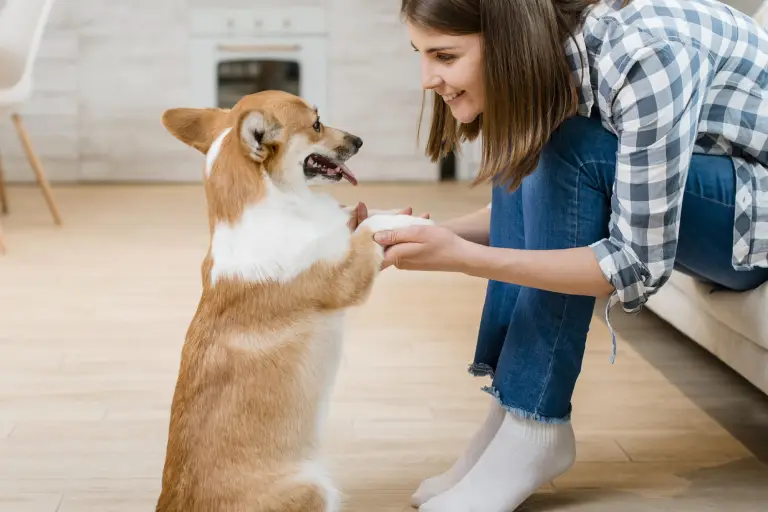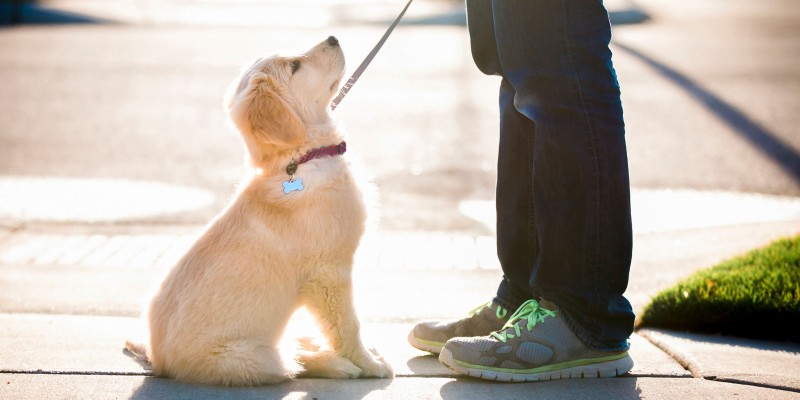Puppy Training Techniques: Teaching Basic Commands for a Happy Pet
Puppy Training Techniques: Teaching Basic Commands for a Happy Pet
Blog Article
Leading Young Puppy Training Methods to Make Sure a Mannerly Pet Dog
Effective pup training is critical for growing a well-behaved companion, and different techniques can dramatically influence a dog's growth. As we explore these approaches even more, it becomes clear that the success of pup training pivots on a mix of techniques that can transform your animal's behavior in exceptional ways.
Positive Support Techniques
Using favorable reinforcement methods is essential for efficient pup training, as it encourages preferred actions via rewards as opposed to penalty. This method takes advantage of the natural knowing processes of pets, reinforcing etiquette by giving concrete and prompt rewards, such as treats, praise, or playtime. By connecting favorable end results with specific actions, young puppies are most likely to duplicate those behaviors in the future.
Incentives must be provided right away after the desired actions takes place to produce a clear link in the pup's mind. Furthermore, varying the kinds of benefits can maintain a puppy's passion and motivation throughout the training process.

Uniformity in Training Commands
Maintaining consistency in training commands is essential for reinforcing the lessons discovered via positive reinforcement strategies. Dogs flourish on regular and predictability, so making use of the same verbal commands and hand signals for certain actions is important. This uniformity assists young puppies recognize what is expected of them, lowering complication and irritation for both the pet dog and the trainer.

Timing also plays a substantial duty in consistency. Commands should be supplied immediately during training sessions and adhered to promptly by favorable reinforcement, such as deals with or appreciation. This immediate response aids solidify the association in between the command and the desired behavior.
Including uniformity right into training sessions will certainly produce a secure discovering environment, promoting quicker proficiency of commands. Ultimately, a well-structured strategy cultivates a solid bond between the pup and its proprietor, resulting in an extra obedient and well-behaved pet dog.
Socialization With Various Other Pets
Socialization with various other pets is vital for a puppy's advancement, as it aids them learn proper behaviors and communication abilities in varied social contexts. Early interactions with various pets can considerably affect a pup's temperament and versatility in numerous situations. When young puppies are revealed to a selection of pets, they end up being a lot more certain and less afraid, which can stop possible behavior issues later in life.

Furthermore, observing body language throughout interactions is website link important. Teach your pup to acknowledge signals from other pet dogs, such as indications of playfulness or discomfort, cultivating shared respect and understanding. Normal socializing not only boosts your young puppy's social skills yet also adds to their total well-being, developing a much more harmonious living setting. Finally, prioritizing communications with other family pets will produce a socially experienced and all-round canine.
Cage Training Conveniences
Recognizing the many advantages of cage training can substantially enhance both the young puppy's and proprietor's experience. Crate training offers a safe and secure environment my review here for young puppies, guaranteeing they really feel safeguarded when laid off. This complacency can dramatically reduce stress and anxiety and stress and anxiety levels for both the proprietor and the pet.
In addition, pet crates function as an important house-breaking device. Pups naturally avoid staining their resting location, therefore encouraging them to hold their bladder until they are let outside. This impulse can quicken the house-training procedure, fostering good practices at an early stage.
When not being watched,Crate training additionally assists in taking care of a pup's actions - puppy training. By supplying a marked area, owners can avoid damaging habits, such as chewing on furniture or entering into dangerous materials. Pet crates can be helpful during travel, supplying an acquainted area that can help relax a pup in new environments.
Last but not least, establishing a cage routine motivates self-reliance, allowing pups to discover how to be alone without anxiety. Generally, crate training is a reliable technique for promoting safety and security, self-control, and tranquility, leading to a well-adjusted, well-behaved family pet.
Leash Training Fundamentals
Leash training is a basic element of liable pet possession that ensures a pleasurable and secure walking experience for both the young puppy and its proprietor. Proper leash training starts early, preferably during the young puppy's socializing duration. When out in public., this training helps establish excellent habits and promotes positive actions.
To begin, select a comfortable collar or harness that fits your pup well. Affix a sturdy leash, ensuring it is not also long, as this can bring about pulling and erratic habits. Begin in a silent environment to minimize interruptions and slowly present your pup to new surroundings.
Use favorable support strategies, such as deals with and praise, to encourage your puppy to stroll close to you. If your pup pulls, stop walking and wait for them to return to your side prior to proceeding.
Furthermore, integrate short training sessions with enjoyable disturbances to construct your young puppy's focus. With dedication and perseverance, chain training will result in a well-mannered companion, making strolls satisfying for both the young puppy and the owner.
Conclusion
In conclusion, utilizing reliable puppy training methods is essential for establishing a mannerly pet dog. In general, these techniques jointly promote a harmonious connection in between puppies and their owners.
As we check out these approaches even more, it ends up being clear that the success of pup training pivots on a combination of techniques that can change your pet dog's behavior in amazing methods.
Making use of favorable reinforcement methods is necessary for reliable puppy training, as it motivates preferred actions via rewards instead than punishment.Crate training also helps in managing a puppy's behavior when without supervision.Leash training is a basic facet of liable pet ownership that ensures a risk-free and pleasurable walking experience for both the young puppy and its owner.In final thought, employing effective puppy training techniques is essential for developing a well-behaved pet.
Report this page